-
Sheldon Pinto
11:15 08th Jan, 2015
Wearables
BlackBerry Unveils Its Android Wear Companion App For BBM
While BBM isn’t going places, we are delighted to see BlackBerry take an interest in the platform.

BlackBerry plans to take discreet messaging to the next level with its BlackBerry Messenger companion app for Android Wear-powered smartwatches. The Canadian company announced that it would soon launch the app that seems to be getting polished right now, by early 2015.
Like every other app developer these days that has rolled out support for Android Wear smartwatches, BlackBerry seems to have finally given in an delivered support for the same. The company has now moved a step deeper into the Android platform by introducing BBM for Android Wear.
The app is very similar to the WhatsApp app for Android Wear and will allow you check messages, reply to them and even browse through saved messages with a swipe. BlackBerry takes things a bit further by even letting you review and accept invites while on the move, reducing the need to pull out your smartphone from your pocket.
All-in-all a great companion if your use the BlackBerry Messenger on your Android device.
TAGS: Software, Apps, Android Wear, Android, BlackBerry, BBM, CES 2015
Apple Watch May Hit Store Shelves By March
The company seems to have set its schedule for retail training to begin in February.
-
Team TechTree
16:23 07th Jan, 2015

While many were awed by the Apple Watch when the company unveiled it at the iPhone 6 event in Cupertino, there was nothing other than a video reel and a couple of dummy demo units available for the world to sample. Apple itself was a bit unsure as the company could not give a definite launch date regarding the roll-out of its first wearable. After a number of leaks and assumptions, we have another one. And while the previous ones were simply guesses, this one comes with some information to back it up as well.
News is that Apple has scheduled the launch of its Apple Watch in March. While the Cupertino tech giant had earlier stated a vague “early 2015” time frame for the launch of its first smartwatch, today’s news comes with some interesting bits as well. Seems that Apple has also scheduled the training for the new smartwatch for its store representatives from the 9th to the 16th of February.
The source also mentions that the Apple Watch software is currently being tested and polished, while the company is working on improving the battery and the inductive charging mechanism as well.
But all of this clearly depends on the manufacturing process and also on the software development as these two could lead to a postponement in the above mentioned schedules. As of now things seem to be on track and March is the month planned for the launch.
TAGS: wearable, Apple, Apple Watch, iOS, smartwatch
OnePlus Teases New Accessory; Will Be Announced Today
The company surely knows how to create some drama for its product launches.
-
Team TechTree
09:45 17th Dec, 2014

OnePlus has been very busy these days. From adding MaxxAudio support for its OnePlus One handset to keeping in good terms with the Delhi High Court over the ban of its products in India; the company never seems to give up. And that is good news indeed for OnePlus fans as the Chinese smartphone maker has begun teasing yet another product via its social media channels.
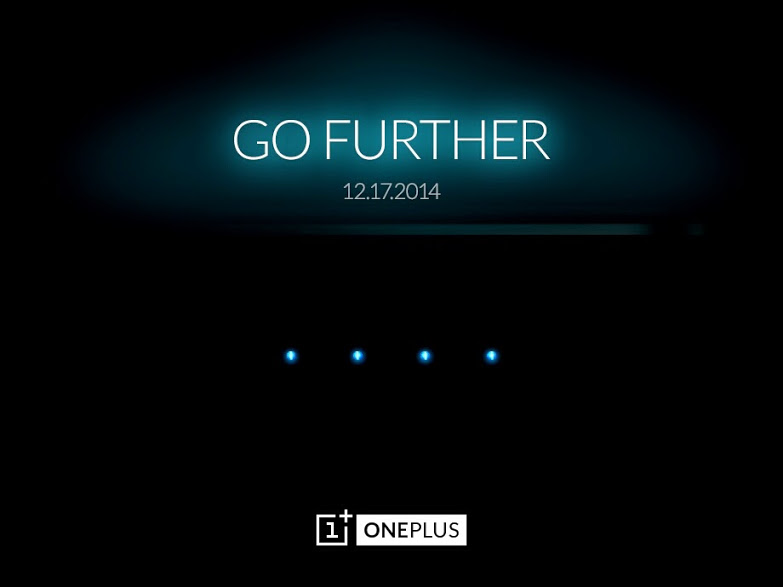
The teaser image shows four distinct LED indicators and is accompanied by some text that seems to be hinting at a portable charger or a power bank accessory. Still then, there is a fat chance that this could also be a smartband since Xiaomi had also launched a similar offering abroad for a low price tag. There is again the possibility that this could also be the leaked OnePlus One Mini as well; but smartphones these days come with big displays so we doubt that 4 LEDs would be necessary to indicate battery charge.
The post also mentions that OnePlus has 10,000 reasons to get excited indicating, that stocks of whatever OnePlus has readied will be limited. While the company is busy settling lawsuits with Micromax in India, its good to see that being smaller in size does not stop it from moving forward.
TAGS: Accessories, wearable, OnePlus
Motorola's Moto 360 Begins Receiving The Lollipop Update
A refreshed UI, some new useability features and support for custom watch faces are the highlights of the update
-
Team TechTree
12:55 16th Dec, 2014

Motorola's take on the Android Wear smartwatch – the Moto 360 – is undoubtedly one of the most popular devices of 2014, and in keeping with its unofficial flagship status Google made it the first one to receive the Lollipop update.
The Internet giant announced back in November that devices running on its new platform (Android Wear) will receive the Lollipop update, and now that time is here. The biggest difference users of the Moto 360 will witness is a thorough overhaul of the user interface, which is now in-line with smartphones running Android 5.0 Lollipop.
Another welcome upgrade is the support for third party watch faces on the Moto 360 which Google had promised. Users will be able to download the app from the Play Store and install them via the accompanying Android Wear app or directly from the device itself.
Other features that come along with the Lollipop update includes something called 'theater mode', that keeps the screen off until a user actually presses on the physical button on the device. There's also improved battery and storage statistics, which will let users keep an eye on the performance of their devices.
While the Lollipop update for the Moto 360 is out, it will roll out to all users over the next few days. Manufacturers usually roll out updates in a staggered manner, so don't fret if your Moto 360 hasn't got its Lollipop makeover just yet.
TAGS: Motorola, Moto 360, Android Wear, Android 5.0 Lollipop, Google
Samsung Launches The Gear VR In The US For $199
The device will be powered by the Galaxy Note 4 smartphone, and will not be compatible with any other device
-
Team TechTree
11:16 09th Dec, 2014

Samsung has finally launched its much awaited Gear VR headset in the US market for $200. The device, as earlier reported, will utilize the Galaxy Note 4 for its screen and processing power, and will not be compatible with any other device.
The Gear VR Innovator Edition, as Samsung says, is specifically targeted at developers and early adopters of the technology. However the company isn't likely to stop anyone from purchasing one, but we suspect limited stocks should take care of that.
As we've heard already, the Gear VR was developed by Samsung along with Oculus, who's software powers the Note 4 when coupled with the VR headset. The company sates that there's already a load of 360-degree viewable content for the device, and that users will be able to develop their own.


For a lot of the Android games that users will be able to play in immersive mode, Samsung says having an Android game controller will become necessary. Early reviews of the device did speak about it positively, but a lot of improvements could have been made since the showcase and launch.
It's yet to be seen how Samsung really pushes the Gear VR, and more importantly what sort of content gets built for it. There's literally no going back on the progress that's been made in the virtual reality space in the past few months, and with giants like Samsung getting in on the action, there's a lot of exciting things coming our way.
TAGS: Samsung, Gear VR, virtual reality, GALAXY Note 4, Oculus VR
2015 Google Glass To Be Powered By An Intel Processor: WSJ
The device will supposedly offer improved battery life, but there's no word yet on what it might look like or cost
-
Team TechTree
15:49 01st Dec, 2014

Google will roll-out a new model of its Glass headset in 2015 which will be powered by an Intel chip and offer better battery life, according to the Wall Street Journal. The experimental gadget has already been through a few iterative changes, but supposedly none have been as major as the one planned for next year.
The Explorer Edition of the Google Glass has become easier to buy over the past year, but its $1,500 price tag and still developing use case has restricted sales. With a faster processor, better battery life and an all-new design, consumer interest in the device could grow and finally lead to the device making it to store shelves.
The WSJ report adds that Google's partnership with Intel for Glass will also include marketing the device to hospitals and finding new uses for it in the workplace. However, the report makes no mention of what Intel hardware will be powering the next-generation Google Glass, but there are a few contenders.
Intel has been working hard to develop new low-energy chips in anticipation of the upcoming IoT (Internet of Things) and wearable revolutions. The company even setup the New Devices Group last year to build the next-generation of devices that will drive the multiprocessor revolution.
TAGS: Google Glass, Intel
Is Apple Looking To Enter The Virtual Reality Market?
A job listing spotted by Mashable could point to the Cupertino giant kick starting its development in the space
-
Team TechTree
17:00 28th Nov, 2014

Virtual Reality is being touted as one of the next-generation modes of communication and media consumption, which has caused a massive influx of investment into the sector. Internet giants Google, Facebook and more mainstream hardware manufacturers like Sony and Samsung are creating headway in the segment, but should soon be joined by their arch nemesis Apple.
As spotted by Mashable, the Cupertino giant recently posted a job listing that points at the company increasing its focus on VR. While not necessarily surprising, the finding does go to show that competition in the VR headset market is only kicking off, with many more big ticket entries planned in the coming in the near future.
The criteria for bagging the job requires applicants to be experienced in virtual reality and augmented reality development, which is quite simply put, obvious. Apple states that the holder of the position will create "high performance apps that integrate with virtual reality systems for prototyping and user testing."
According to TechCrunch, Apple's patent machinery has been filing for intellectual rights related to head-mounted display systems from as early as 2006. While the job posting may suggest that Apple will become an active participant in the VR space, it's really hard to say when (if ever) the company will do so.
TAGS: Apple, virtual reality, Headsets, Oculus Rift
Motorola Begins Selling $29 Leather & $79 Metal Band For The Moto 360
It's great to see Motorola taking the market for customization so seriously
-
Team TechTree
14:56 28th Nov, 2014

Just in time for the holiday shopping season, Motorola has begun selling individual bands for its Moto 360 smartwatch. The bands will be available in both leather and metal options, and are priced at $29 and $79 respectively.
The leather bands are available in three shades – black, stone and cognac, while the metal bands come in either a dark or light finish. All the recently launched bands are of the same width as the ones the Moto 360 ships with, but the company promises slimmer bands are on the way.
Motorola advises buyers head over to a jeweller in order to get the straps swapped out, given that the process isn't as straightforward as it may seem. An earlier announcement by the company pointed out that more watch band options are on the way, so if you aren't completely bowled over by the current options, it might pay to wait a little longer.
The straps are currently available on Motorola's store in the US, however it isn't clear when they might make their way to the Indian market. E-retailer Flipkart currently sells the Moto 360 in India for Rs 17,999 which is higher than the $249 price tag of the device in the US. It is to be seen what the individual watch bands will cost in India, but be assured that they'll cost a pretty penny.
TAGS: Motorola, Moto 360, smartwatch
Android Wear’s Lollipop Update To Bring New Watch Faces And UX Improvements
Clearly, Android Wear’s current UX is a bit cubersome in a way.
-
Sheldon Pinto
15:11 12th Nov, 2014

Screenshots of Android Wear’s upcoming Lollipop overhaul seem to have made its way online. The leaked screenshots show a plethora of new and refreshed watch faces, but visible changes are not just cosmetic as Google has been working on making the swipe-happy UX even simpler.
While screenshots of the new companion app that runs from the smartphone have leaked online, we now know for sure that there are a lot more improvements under the hood than we had expected. Firstly, you can now change a watch face directly from the Wear app. Next up, is the availability of the new watch face API that allows devs to plug in new features like the weather right there on the watch face. This eliminates the need to access the weather card to check the weather.
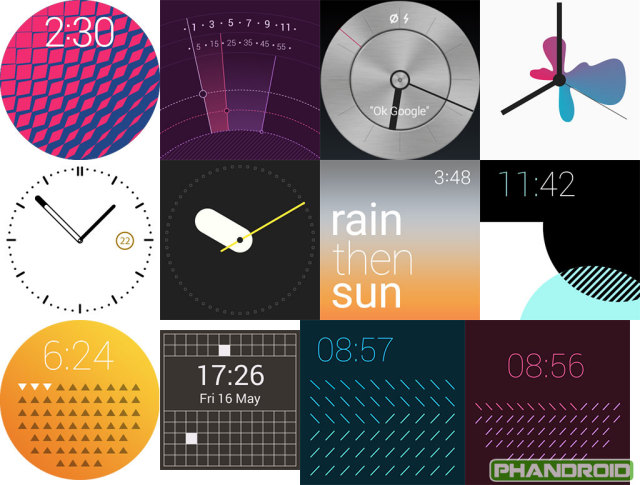
Google is also planning to reduce the whole scrolling problem, that forces users to scroll all the way to the settings menu just to change the brightness level of the display. While this may not sound like much, smartwatches without an ambient light sensor leads to owners flicking all the way to the bottom, every time the lighting environment changes. All you will need to do post the update is swipe down to access brightness levels and swipe left to right to change the settings.

Among others, Accessibility features will also make their way onto Android Wear devices, along with a last used setting option that will float on top; reducing the need for you to scroll all the way to the bottom for a particular setting. Now that is a much needed change that we are looking forward to.
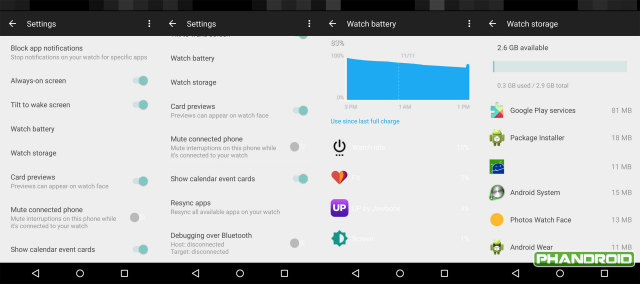
We simply cannot wait to see the Material Design influence to the UI and the new improvements in accessing the settings menu show up on our Android Wear smartwatches. More importantly the new update will even deliver watch and battery information to your smartphone, giving you the right estimate about when your smartwatch is going to conk off.
TAGS: Software, wearable, smartwatch, Android Wear, Android 5.0 Lollipop, Google
Sony’s Smartwatch 3 Lands In The US Google Play Store
After a long wait, Sony’s first Android Wear-powered smartwatch is finally available in the US.
-
Sheldon Pinto
15:29 11th Nov, 2014

At times it does seem that Sony started the smartwatch craze after all. The company launched its smartwatch series much before the smartwatch trend picked up and stuck to its custom made Android ROMs for running app extensions. This year at the IFA Berlin, we certainly saw a big refresh, not just with smartphones and cameras but also on the wearables front where Sony unveiled its first Android Wear-powered wearables tagged as the Sony Smartwatch 3. Well, the waiting is now over as Sony seems to be ready to bring its Smartwatch to the masses, as the wearable has finally gone on sale in the US.
The Smartwatch 3 has been listed for 249.99 USD (approx 15,000 INR) and comes with the usual smartwatch features that we have been seeing on Android Wear devices ever since the launch of the LG G Watch. While Sony does add its custom touch to it, it is indeed the IP68 certified water and dust proof design that will grab attention, even though it looks simple. The smartwatch also includes a microphone for accepting those “Ok Google” commands that many will prefer using since it does run Android Wear inside and connects to app on your Android smartphone.
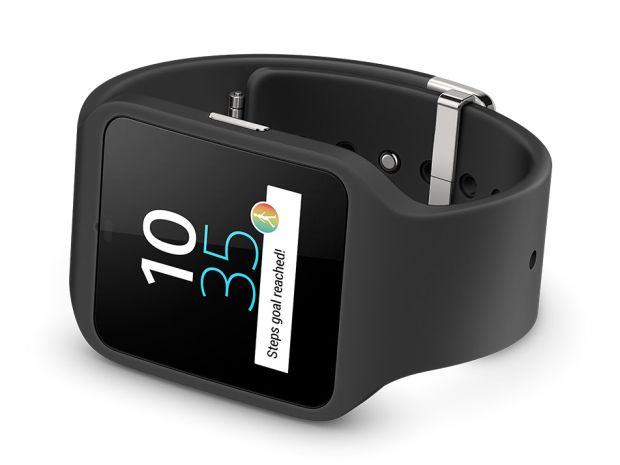
Perhaps what is most important about the Sony Smartwatch 3 is the fact that it connects to the Sony Lifeblog app. The app collects fitness data from the smartwatch and displays it in a simple easy to understand collage-like timeline, that allows you to keep track of your sleep and fitness regime with ease.
The Sony Smartwatch 3 is currently only available in Classic Black colour while the remaining, Sport Lime and even the pink and white extra straps have yet to show up. As of today the smartwatch has yet to appear in the Indian Google Play Store. While Sony will sell its smartwatch via retail stores as well, we can expect the device to land in India by next month as we had reported earlier.
TAGS: wearable, smartwatch, Android Wear, Sony
The ASUS ZenWatch Finally Goes On Sale For $199
The device doesn't look as mundane as some of its other square-screened Android Wear counterparts
-
Team TechTree
11:10 10th Nov, 2014
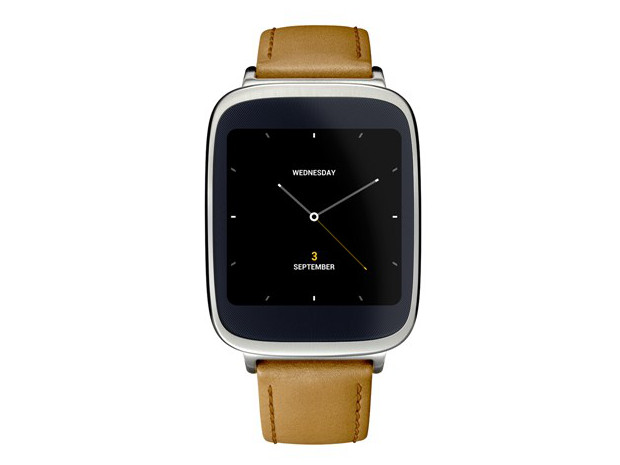
Asus was among the first manufacturers to announce its Android Wear smartwatch at Google I/O earlier this year, and after a long wait we finally have the device hitting store shelves. The device went on sale through Best Buy in the US on November 9 for $199, and will hit the Play Store in the next few days.
The ZenWatch stands out from the rest of the devices running Google's watch OS for a few reasons. Despite using a rectangular form factor, the device doesn't look as mundane as the LG G Watch and Samsung Gear Live (square displays), and manages to look good despite not being round.
There's an inherent advantage of making a rectangular smartwatch on Android Wear, as despite supporting round displays, the UI is clearly more suited for the former display type. When it comes to the UI, the ZenWatch will be the first Android Wear device to feature a more customized interface and software.
It will be interesting to see what enhancements Asus has made with its new found freedom, however from a hardware standpoint it's similar to what we've seen from other manufacturers. The ZenWatch comes with a battery-friendly AMOLED display and easily customizable strap options.
Unlike the Sony Smartwatch 3, the Asus device does not have a built-in GPS module, which means it won't be able to take advantage of Android Wear's latest features. The Asus ZenWatch is priced at $199, which is on-par with similar Android Wear powered devices.
TAGS: ASUS, ASUS ZenWatch, smartwatch, wearable, Android Wear
Motorola Puts The Moto 360 With Metal Bands On Sale For $299
The company will also unveil new software features like My Design that lets users cutomize the watchface
-
Team TechTree
10:01 07th Nov, 2014
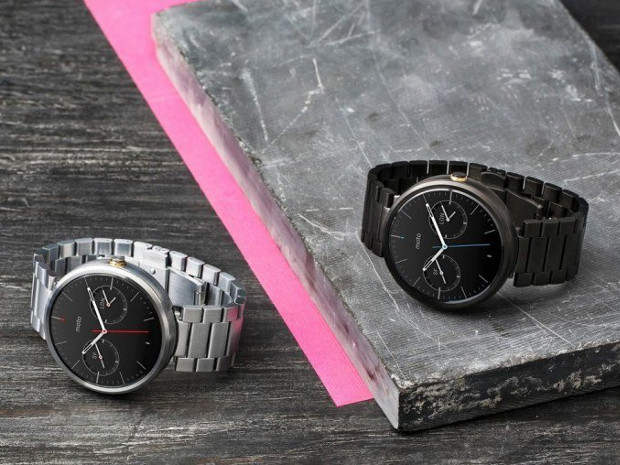
At long last Motorola has finally put the metal bands for its Moto 360 smartwatch on sale, offering users a level of customization that it so furiously publicized during the device's launch. The bands are available in a shade of black and silver, and a Moto 360 kitted out with either of them will retail for $299.
The new straps have a width of 23mm, but the company says that a slimmer 18mm option is on its way, and will retail for the same $299. There will also be a watchband in a champagne shade that takes the price of the device up to $329, alongside three new shades – black, stone and cognac – of leather bands.
Do the metal and regular leather bands not make your cut? Fear not, as Motorola has announced that it's partnering with TTYL to make silicone bands for the Moto 360 in a variety of hues, and DODOcase to offer four new color options in stitched leather variants. The silicone and stitched leather variants haven't gone on sale yet.
Motorola hasn't just brought in a variety of watchbands to help buyers customize, but has has also introduced new features such as My Design, that lets users customize the watch face. They've also included that winnin watchface design from the Moto 360 challenge we had prior to the device's launch.
The company is also introducing its own fitness app, dubbed Moto Body, that tracks steps, distance, heart-rate and calories burned. The above mentioned software features will be available through the Moto Connect app within the next few days. While the watchbands are available for sale in the US through Motorola.com, it is to be seen how soon they make their way to India through Flipkart.
TAGS: Motorola, Moto 360, smartwatch, wearable, Android Wear
Wearable Sales Up By 40 Percent During Q3 Of 2014
Over 12.7 million units were shipped during the quarter, and it is estimated that over 52 million devices will be shipped in 2014
-
Team TechTree
15:48 06th Nov, 2014
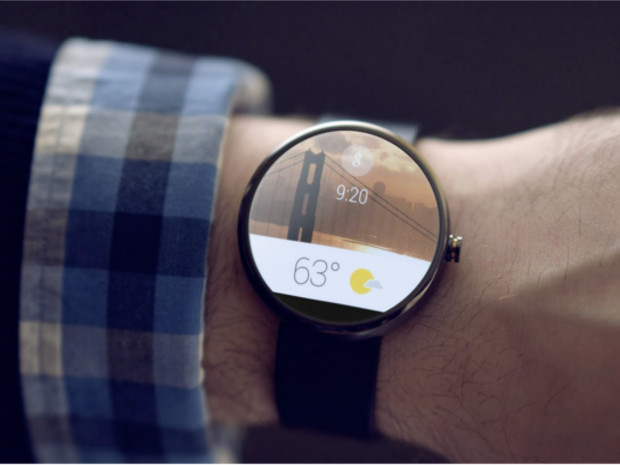
Wearables are touted to be the-next-big-thing in the technology sector and are slowly but steadily making their entry into the mainstream. According to research firm Futuresource Consulting, global wearable sales grew by 40 percent during the third quarter of 2014, clocking in at 12.7 million units.
According to the report, over 52 million wearables are expected to be shipped in 2014, an increase of 32 percent when compared to last year. Moreover, the industry is expected to grow to 74 million units in 2015, as players like Apple begin to sell their devices in the market.
Smartwatches are expected to lead the way of the wearable, with an estimated 101.7 million of them being in use by as early as the year 2019. While there is indeed growth, sales of wearables, especially smartwatches, are only a sliver compared to global smartphone sales.
Futursource expects Apple to lead the smartwatch category once its recently unveiled Apple Watch goes on sale early next year, however we feel its too early to say who the winner will be. While giants Google and Apple have gone down the 'wrist worn tech accessory' route, Microsoft is chasing the health and fitness market.
The Redmond giant recently unveiled Band, which housed 10 different sensors to constantly monitor the wearer's physical activity. Moreover, Microsoft doesn't seem to be all that focused on the hardware market, but is instead using the band as a way to show what its health and fitness software can do.
It's too early to say who's going to own the wearable space, because no manufacturer has nailed the concept. In the coming year or so, we should see quite a few new concepts - be it fitness bands, smartwatches or devices that can do both – make it to the market to gauge consumer response in order to find the winning formula.
TAGS: wearable, smartwatch, Android Wear, Apple Watch, Microsoft Band
Apple’s Gold Watch Will Cost You An Arm And A Leg At $4000
Clearly, there was a reason why the company did not announce the price tags of all its Apple Watch models.
-
Sheldon Pinto
12:26 06th Nov, 2014

The recent iPhone 6 launch saw a lot of interest and an enthusiastic Tim Cook on stage, who was more than happy with the media’s response to the “revolutionary” Apple Watch. While the Cupertino tech giant did not have any functional demo units on display, it was pretty clear that sales would begin by the next year. What we did find out somehow was that the base price of the Apple Watch would begin at 349 USD. Seems pretty normal right? Well news has come from a well known source that the Stainless Steel model will set you back by 500 USD while the Gold version will be priced at a shocking 4000 USD.

Shocked? Well, it’s the same expression out here. While we did expect the Stainless Steel model to cost a bit more, we clearly did not expect the Gold version to cost a bomb. At this price (2,45,000 INR) you could easily buy a mechanical watch from well known horologists from around the world and yes, you would not need to charge it everyday.

Then again the Stainless Steel version does make a bit of sense (at 30,000 INR) and kind of places the Apple Watch in line with the pricing for its iPhones (all things Apple are expensive). Clearly, the 349 USD (21,000 INR) pricing was for the base Aluminium versions. Still then, at the rate at which those iPhone 6 and 6 Plus models sold out in India, we guess that there would be a number of buyers lined up to buy the Apple Watch as well. But that again would depend on the timing, which Apple has so far has planned for Valentine’s Day (so that you can beam your heart beat) in February of 2015, at least for the US market.
TAGS: wearable, smartwatch, Apple, Apple Watch
Flipkart Adds Android Wear Support For Its Smartphone App, But Why?
All users will be able to do is view their wishlists and the odd notification right from their wrists
-
Alnoor M Peermohamed
14:17 04th Nov, 2014

Indian e-retail company Flipkart is banking on its technological prowess to get ahead of its rivals, including American giant Amazon. The company has now become the first e-commerce player in the country to out Android Wear support for its mobile app, pushing notifications right to a users wrist.
For now users will only be able to view their wishlist and the odd notification right from their Android Wear devices, but the company plans to enhance their use of the platform in the future. Information related to order tracking and notifications on price drops are among the features we could see in the near future.
Users will have to download the latest version of Flipkart's app from the Play Store in order to turn on support for Android Wear devices. Moreover the company has also used this as an opportunity to roll out a few new features for its mobile app, including a refreshed UI, and enhanced search to help you find the right products.
The smartwatch market is still at a nascent stage of growth, and it needs as much support from app developers and manufacturers until a strong use case is built. While it's great to see Flipkart experimenting with new things, getting push notifications related to orders isn't something you'd want to do with a smartwatch.
Moreover, the market for smartwatches in India is almost non-existent, eliminating the use of Flipkart's Android Wear app to a very niche segment. The app currently doesn't do enough to find space on a user's wrist, a very valid argument a lot of people have been using to shun the concept of a smartwatch itself.
TAGS: Flipkart, Android Wear, Apps, smartwatch
Moto Fans Rejoice; The Moto 360 Is Back In Stock
The smartwatch went out of stock pretty quickly the last time around, so it makes sense that the same will happen this time as well.
-
Team TechTree
14:53 03rd Nov, 2014

Motorola fans and those looking out for a good smartwatch will indeed be pretty happy to know that the Moto 360 is back in stock. The smartwatch that is sold officially through online retailer Flipkart had first shown up online during the festival season after which it immediately went out of stock.
The smartwatch is indeed one of the best looking, Android Wear powered smartwatches available today. Although it does fall on the chunkier side, it sports a modern design and a large display for all those notifications. Moreover, its even water-proof and sports a 320 mAh battery and also comes with the wireless charging dock (provided in the package) that turns that big display into a bedside clock.
While there are just two options available out here in India, buyers will indeed have to make do, unless of course you are one of those waiting for the gold version to arrive. We suggest that you pick up one before the smartwatch runs out of stock once again. The next best thing is obviously LG’s completely round G Watch R which is yet to be announced in India.
TAGS: wearable, smartwatch, Android Wear, Motorola, Motorola Moto 360
HP Takes The Wraps Off Its MB Chronowing Smartwatch
While it may seem a bit lacking when compared to the regular Android Wear smartwatch features available today, HP’s best does come with one impressive feature.
-
Sheldon Pinto
11:57 03rd Nov, 2014

HP has finally launched its first smartwatch and it does look impressive. The smartwatch is called the MB Chronowing Smartwatch and while it does look like a regular smartwatch on the outside, it packs in some run-of-the-mill smartwatch features inside.
Clearly, HP along with designer, Michael Bastian managed to churn out a smartwatch that well... does not look like one. The smartwatch that was announced earlier, looks like a regular wristwatch, but upon looking closer you will notice the display with one space reserved just for the analogue hands while the rest of it displays contextual information streamed from your smartphone.
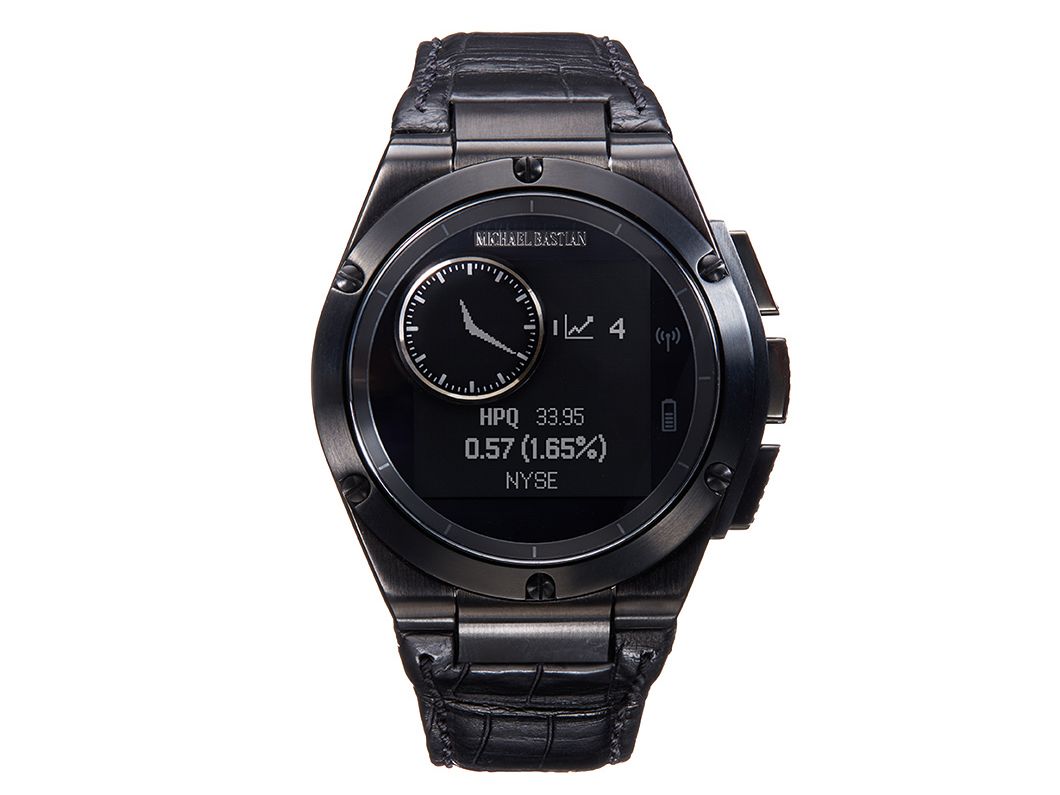
Yes, the smartwatch has a couple of misses. It's not a touchscreen device to begin with, since it uses those three buttons to deal with the limited feature set, and your smartphone to handle the rest. While it does alert your of incoming , notifications from emails, texts and missed calls by delivering gentle vibrations to your wrist, it also keeps up with scores from your favourite teams and event from your calendar. What is missing are all those fitness tracking sensors and all those apps that come with Google’s Android Wear ecosystem.
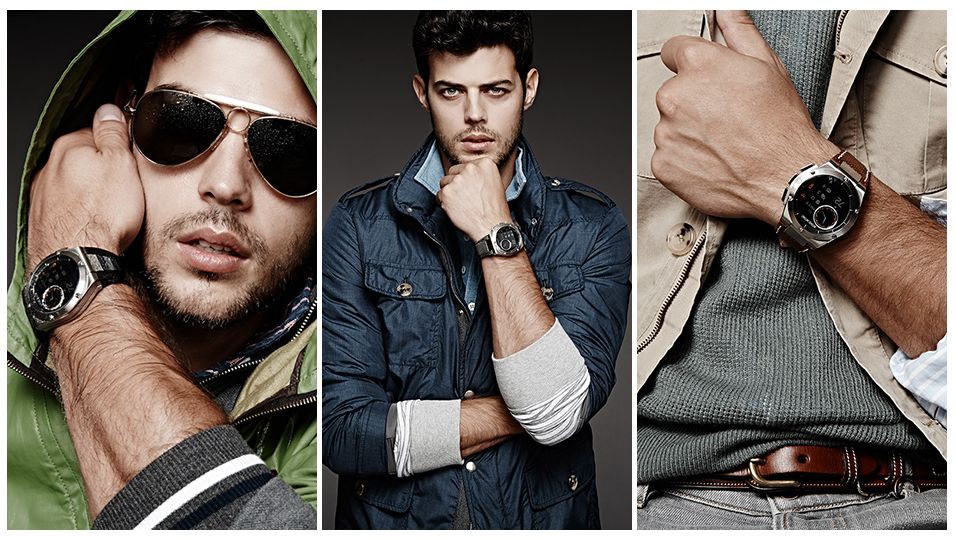
But the MB Chronowing Smartwatch does deliver pretty well on one front and that is the battery life. The company claims that smartwatch with regular usage will last for up to a week on a single charge. We guess this is thanks to the display tech (which is pretty pixelated if you ask us).
The smartwatch will be available in three strap options (brown leather, olive nylon or black rubber) and will go on sale on Gilt starting from USD 349 (649 USD for the black Sapphire-glass crytsal variant) in the US only.
Microsoft Enters The Wearable Space With A $199 Fitness Tracker
The devices is a smaller part of Microsoft's health and fitness dreams, led by its Health platform
-
Alnoor M Peermohamed
11:03 30th Oct, 2014
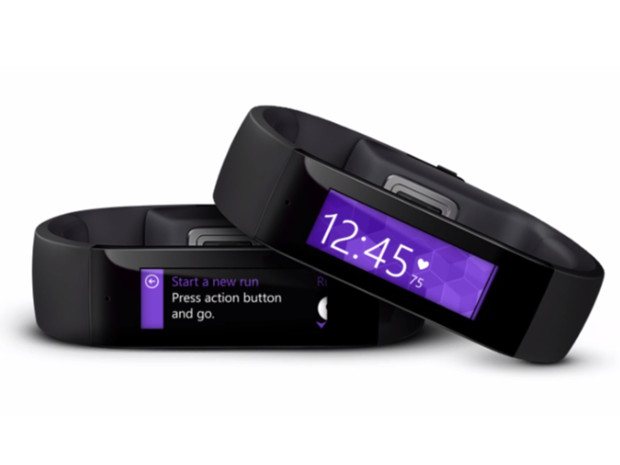
Microsoft has finally announced its entry into the wearable space, starting with a $199 fitness tracker and a cross-platform cloud service. The company's key focus will be revolutionizing global health and fitness, and while the wearable device is big news, it's sort of eclipsed by Microsoft's Health platform.
To put it simply, Microsoft Band (what the company is calling it) is a fitness tracker powered by Microsoft Health. The device's (and cloud service's) highlight is that it will be compatible will multiple platforms, being available to iOS, Android and Windows Phone users all at the same time.
In terms of the hardware itself, Microsoft is using Band similar to how it uses its Surface to set the hardware standards for other manufacturers. The company claims the device features today’s leading sensor technology, and is essentially made up of an accelerometer, GPS module, always-on heart-rate sensor and a simple LED screen on top.
Rather than just counting steps, Microsoft Band will combine data from the GPS and always-on heart-rate monitor to accurately measure the length of a wearer's strides and calories burned. "It really gets to a different level on fitness, on heart rate, on calorie count, on calorie burn, on what you're doing, because of that," said Zulfi Alam, General manager of personal devices at Microsoft, according to the Verge.
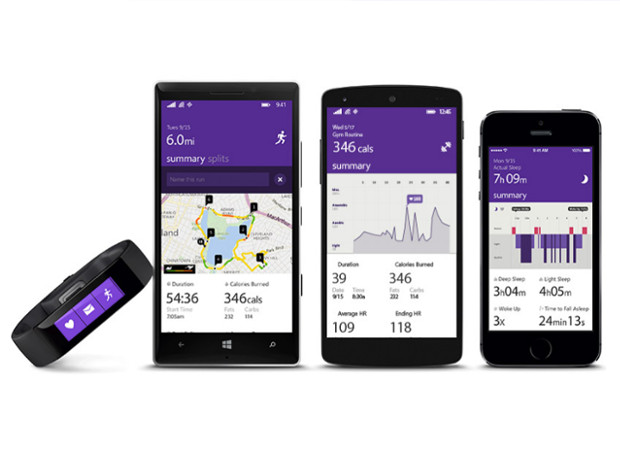
The company will also license the 10 different sensor modules it has developed for Band, so that other manufacturers can get in on Microsoft Health. While that's the hardware side of things, on the software front, at present Microsoft has tied up with Jawbone, MapMyFitness, My Fitness Pal, and Runkeeper to import their data.
Microsoft Band is still quite a simple device, and the company says it isn't trying to replace the watch on your wrist. The device houses a small rectangular screen that shows the time by default, and users will be able to scroll through tiles (no surprise there) that will display a users step count, workout data, etc. Band will also display phone notifications and there's even Cortana integration when paired to a Windows Phone.
While Microsoft Band is big news, Microsoft Health is what the company is really trying to sell to consumers. Band isn't that much different from what we've seen other manufacturers do, but it's what users will be able to do with the collected data that really holds promise. One thing however is crystal clear, Microsoft's take on health and fitness tracking is a culmination of mobile and cloud in the purest of senses.
TAGS: Microsoft, Microsoft Band, Microsoft Health, health & fitness tracker
Lenovo's Smartband Activity Tracker Will Automatically Unlock Your PC
Apart from the proximity-based sign-in feature, not much else sets the device apart from the competition
-
Team TechTree
12:12 28th Oct, 2014

Lenovo recently announced (then unannounced) its entry into the wearable space with Smartband, an activity tracker that monitors your heart-rate, steps taken and even shows phone notifications. While that doesn't sound too exciting, the company's fitness band may have a trick up its sleeve – it will unlock your PC when you're nearby.
That should be quite a handy feature for those who hate entering passwords, but still need to safeguard stored data from the prying eyes of friends and foes. Given that Lenovo's Smartband is a activity tracker that encourages you to wear it all day long, it should be the perfect device to automatically unlock your PC every time you get near it.
According to an Engadget report, the company had listed the Smartband on its official website (has been taken down), giving out a whole host of details including the proximity-based sign-in function. However, it isn't clear when you'll be able to get the device on your wrist, as the company hasn't yet announced when the device will go on sale.
TAGS: Lenovo, Smartband, health & fitness tracker
Android Wear Update Brings GPS And Music Playback Support
The tweaked software will allow users to leave their smartphones behind on a few occasions
-
Team TechTree
09:29 24th Oct, 2014
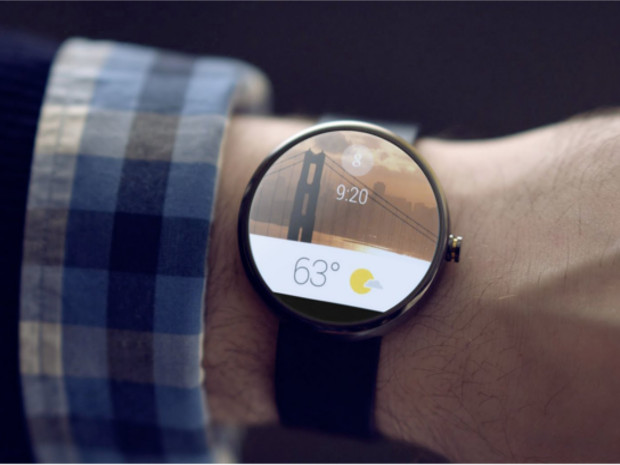
Google is rolling out its first major Android Wear update, which will allow the smartwatche OS to perform a few core functions without being tethered to a smartphone. Tweaks to the software will now allow an Android Wear device to stream music directly to a bluetooth headset, and use an internal GPS to track the wearer's location.
The update will give smartwatch wearers a certain degree of freedom from lugging around their smartphones, something Android Wear didn't make possible earlier. The new features will allow users to listen to music as well as track their progress while jogging, all this without the aid of a smartphone.
There is however a catch. Users of first generation Android Wear devices will not benefit massively from the update. While they'll be able to stream music directly from their wrists, devices like LG's G Watch, Samsung's Gear Live and the Moto 360 do not have built-in GPS modules to really make use of the location tracking feature.
Sony's upcoming Smartwatch 3 will be the first Android Wear device with GPS support to go on sale. It's also the first device of its type to add NFC support, and while that won't have much use at the moment, it's not hard to see how the device could be used for making wireless payments etc.
Android Wear devices have been criticized for merely being something that bombards you with notifications on your wrist. The newest update is beginning to show how things are going to change in the future. On the app front, Google says there are already tens of thousands of apps with support built in for Android Wear, and that number is only getting bigger.
TAGS: Google, Android Wear, smartwatch, wearable
Update For Moto 360 Brings Further Improvements To Battery Life
There are also a few UI changes and even a mood light when you dock the device for charging
-
Team TechTree
17:10 22nd Oct, 2014
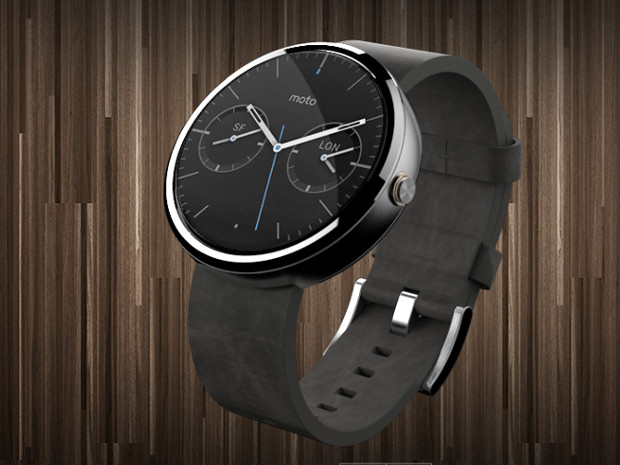
The Moto 360 was one of the most highly anticipated devices of this year, but soon after it was launched everyone realized there was a massive elephant in the room – Pathetic battery life. Motorola then soon rolled out a software update to fix the issue, which some users claimed doubled the battery life of the device.
Now, the company has rolled out yet another software update, which supposedly improved battery life even further, apart from a few bug fixes and UI changes. The biggest boost to battery life comes with the device's ability to turn off Ambient Mode (that keeps the screen on at all times) when there's only 15% charge left.
Other updates include the ability to temporarily dismiss a notification right from the watch face, meaning you won't have to dig deeper within Android Wear anymore to do so. There's also a mood lighting setting that comes on when you place the device on its wireless charging dock, apart from some improvements to the Bluetooth.
Motorola has said that the update will be phased, so don't freak out if you haven't received it yet. The company hasn't specified a timeline within which users could receive the update, but as it is with such things, the entire update process should be done in a few weeks at most.
TAGS: Motorola, Moto 360, smartwatch, wearable
FitBit's Upcoming Surge Is A $249 Activity Tracker With Built-In GPS
While the device looks a lot like a smartwatch, it won't be rivaling Android Wear or the Apple Watch
-
Team TechTree
16:26 20th Oct, 2014
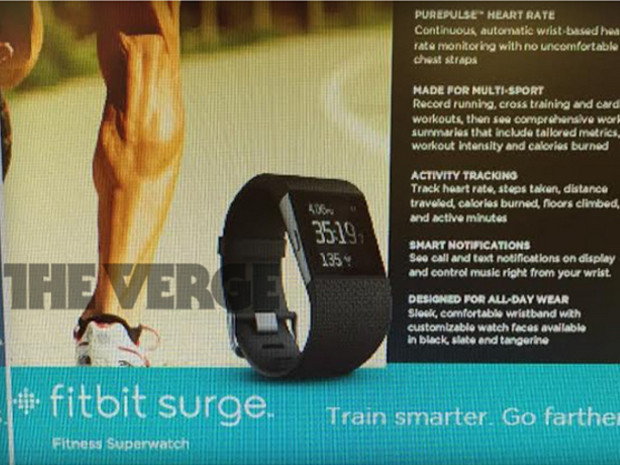
FitBit is all-set to launch three new fitness trackers in the coming weeks, and while two of those will be updated versions of the company's current crop of devices, the third wearable should be a flagship device called the Surge.
According to a Verge report, the Surge is what FitBit is calling a “superwatch” with built-in GPS tracking and TruePulse heart-rate monitoring. The device will provide wearers with real-time workout and other activity data, such as distance, pace, elevation climbed, heart rate intensity, and so on.
Leaked marketing material suggests that the device will cost $249, similar to smartwatches from more mainstream electronics manufacturers, but the Surge isn't a smartwatch. It is essentially a glorified fitness tracker, probably aimed at athletes, and will not go up against Android Wear and the Apple Watch.
The Surge will carry on FitBit's 24/7 activity tracking abilities, and will wirelessly sync all the data to the FitBit app on your smartphone. Users will be able to make sense of all that logged data with metrics such as calories burned, floors climbed and active minutes. There's also that brilliant FitBit sleep tracker and vibrating alarm.
Notifications, which seem to be a huge part of pretty much ever smartwatch out there will be restricted only to phone calls and texts. You'll also be able to control music playback right from your wrist, but that should be pretty much it. While the specs of the device have leaked in all their glory, there's no exact launch date yet.
Image courtesy: TheVerge.com
TAGS: FitBit, Surge, activity tracker, wearable
Microsoft To Launch Its Smartwatch In The Coming Weeks: Forbes
The device will supposedly focus on health and fitness tracking and resemble Samsung's GearFit.
-
Team TechTree
10:23 20th Oct, 2014
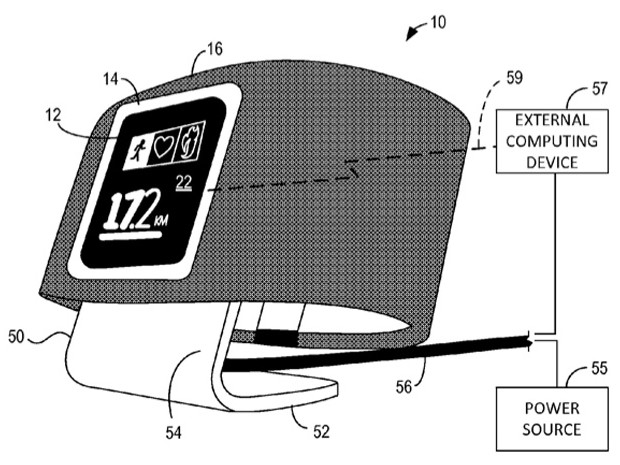
Off-late Microsoft has been lacking quick responses to new trends in the technology sector, especially when it comes to the burgeoning wearable space. However, a Forbes report claims that could soon change, as the Redmond-based tech giant is expected to unveil its very own smartwatch in the coming weeks.
According to the report, Microsoft's first wearable device will be all about health and fitness tracking, which while not a particularly new idea, should be quite interesting to see. The purported device will feature a heart-rate monitor and will be compatible across iOS, Android and its own Windows platforms.
Microsoft's upcoming smartwatch will supposedly last for two days on a single charge with regular use and will be available in time for the holiday shopping season later this year. The unidentified sources Forbes cites say that the device will resemble Samsung's Gear Fit, with a full-color touch screen and wrist-band like construction.
The wearable space, especially smartwatches and devices like Google Glass are receiving a great deal of attention from consumers. While the market for wearables is still miniscule in comparison to smartphones, it is expected to quickly grow as these devices become more useful and also cheaper.
Microsoft may be a year or two late to the smartwatch game, but going by the fact that rivals Google, Apple and Samsung haven't really figured out the market yet, the company does have a healthy fighting chance. The news is far from confirmed, and even if Microsoft doesn't reveal its smartwatch in the coming weeks, it's only a matter of time before the company has to get into the space.
Earlier rumors had hinted that Microsoft's smartwatch could feature an always on heart-rate monitor, which if true, could disrupt the health and fitness wearable space. The other big winner will be the device's cross compatibility, especially since the company's is a distant third in the share of the smartphone market it controls.
TAGS: Microsoft, smartwatch, wearable, Samsung, Gear Fit, fitness-tracker
Samsung Launches The Gear S In India; Attaches Ridiculous Price Tag
The smartwatch will connect to 2G/3G cellular networks and allow users to make and receive phone calls
-
Team TechTree
11:37 15th Oct, 2014

Alongside unveiling its latest high-end phablet – Galaxy Note 4 – in India, Samsung also launched its Tizen-based Gear S smartwatch in the country. The device has been priced at Rs 29,500, and has the ability to connect to 2G/3G networks to allow users to make and receive calls.
Samsung is marketing the Gear S as a standalone device, which doesn't need to be in close proximity to a smartphone to be of any real use. The device can stay connected via a whole host of networks, 2G/3G cellular networks, Wi-Fi and Bluetooth 4.0, but in no way is it a replacement for the smartphone in your pocket.
The Gear S features a 2-inch curved AMOLED display with a resolution of 360x480 pixels. Powering the device is a dual-core 1GHz processor, coupled to 512MB of RAM. There's 4GB of on-board storage, a 300mAh battery that's supposedly good for 2 days of use on a single charge and a tray for the nanoSIM at the back.
Pretty much the only party trick of the Gear S is the ability to display notifications from text messages, social networks, calendars and a few other apps without being paired to a smartphone. Users will also be able to reply to these notifications through voice, and of course there's also an on-screen keyboard.
Like some of its other smartwatches, the Gear S gets a heart-rate sensor at the rear, and Samsung has loaded its own S Health app apart from Nike+ Running. Users will also have a turn-by-turn navigation service, provided by who else by Nokia's Here Maps service.
With the market for smartwatches is growing at breakneck speeds, it's okay to see manufacturers throw up all sorts of contraptions until they find that winning formula. The biggest problem holding back the Gear S however is its ridiculous price tag, which is bordering high-end smartphone territory.
TAGS: Samsung, Samsung Gear S, smartwatch, wearable
Carl Zeiss Showcases Its $99 Virtual Reality Headset
Like Samsung's Gear VR, the device will be powered by the user's smartphone, but isn't locked to any one device
-
Team TechTree
12:32 13th Oct, 2014

Virtual reality has been positioned as the “next-big-thing” in the tech world, and while this revolution hasn't kicked off just yet, consumers could soon be spoiled for choice. Carl Zeiss is the latest entrant into the emerging segment - after Oculus, Google and Samsung - and has shown off its VR One, a $99 headset for smartphone users.
The concept of the VR One is very similar to that of Samsung's Gear VR – a phone powering a virtual reality headset, utilizing the screen, processing power and plethora of its sensors. Unlike the Gear VR however, Carl Zeiss' device will support devices from multiple manufacturers, working with any smartphone between 4.7-inch and 5.2-inch.
Users can already pre-order the VR One of Carl Zeiss' official website, however, in order to make any phone work with the device, buyers will have to shell out an additional $9.90 for drawers specific to their phone. The company has said that the first consignment of the device will begin shipping in Christmas this year, and will fully go on sale only next year.
A huge part of a VR headset's quality is its optics, so with Carl Zeiss handling that bit of it, the VR One is sure to produce some great 3D visuals. The other part will be dependent on the quality of the smartphone screen, and as Oculus has shown us with the Rift 2, a 720 display is adequate to provide an awesome immersive experience.
Carl Zeiss is also taking suggestions from prospective buyers for what phones should be supported by its VR One. There won't be any change to the main hardware of the headset when using different phones, just the drawer that holds the smartphone in place will differ.
TAGS: Carl Zeiss, VR One, virtual reality, Headsets
ASUS ZenWatch To Reach Store Shelves In Taiwan In November
Will be available only in limited quantities.
-
Team TechTree
14:39 09th Oct, 2014

If you were impressed with the slim, all-metal ASUS ZenWatch launched at the IFA Berlin and decided to skip on the Moto 360 and wait for it; well you will have to wait a little longer. News is that ASUS will begin pushing out units of the ZenWatch only in November. Moreover, sources also confirm that the Android-Wear powered smartwatch will be available in limited quantities only in its home market in Taiwan.
Android fans who have been waiting for a slimmer Android-Wear powered smartwatch, will indeed have a lot more waiting to do. While current offerings including the Moto 360 are pretty chunky, LG’s much awaited G Watch R is yet to be launched (although the launch seems imminent). ASUS does offer a much slimmer all-metal offering running Android Wear but comes with that retro design that many desire.
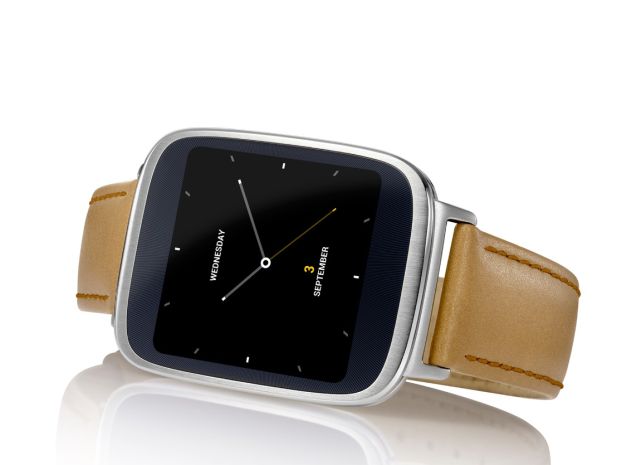
The ASUS ZenWatch sports 1.63 inch 320 x 320 pixel AMOLED display, with a 1.2 GHz Snapdragon 400 processor at the heart. The device comes with 4 GB of ROM and 512 MB of RAM which are pretty much the hardware specs of the Nokia Lumia 530 smartphone.
Indeed those looking for a slimmer smartwatch in India will have to wait first for the G Watch R and then the ASUS. Since stocks coming in will be limited in ASUS’ hometown itself, we can clearly not expect it to reach Indian soil any time soon.
TAGS: smartwatch, wearable, Android Wear, ASUS ZenWatch, ASUS
HTC Holds Back From Unveiling Its Wearables Until Next Year
The company isn't shelving its wearable plans, but says it's going to wait till it gets it right
-
Team TechTree
12:08 08th Oct, 2014

HTC is holding a press event later today, but has confirmed that a smartwatch of any sort isn't going to be unveiled just yet. Speaking to Re/Code, the Taiwanese firm said that a wearable launch was due for right about now, but the company is holding back from launching the device this year.
“We had originally planned to have a wearable launch in this time frame,” said Jason Mackenzie, head of HTC America. “It ended up just not being ready.”
Further, Drew Bamford, who heads HTC's Creative Labs said that the current crop of wearables on the market don't do much to earn their space on wrists. “We honestly don’t think anyone has gotten it right,” he added. HTC believes its development strategy will help it change that, but getting it right will require some more time.
Considering the limiting features of current wearables in terms of battery life and the fact that they are merely devices that deliver notifications to your wrist, HTC's move is more than justifiable. However, not having a product on the market means the company is losing valuable up-time, and could fall behind its rivals.
The company says its product will come to the market only when it figures a stronger use case, compelling users to strap the device onto their wrists. There are a plethora of wearables currently on the market, and while some are great, we can't help by side with HTC when they say there isn't a good enough reason to wear one everyday.
TAGS: HTC, smartwatch, wearable
Samsung Gear S Gets The Opera Mini Web Browsing Experience
Samsung seems to be working hard to get a number of developers to create third-party software for its products.
-
Sheldon Pinto
18:51 07th Oct, 2014

Samsung for once actually seems to be keeping up to its promises in terms of providing third-party apps for its unique products. The Gear S was clearly a unique device in the smartwatch world and did not run on the Android Wear platform, but on Samsung’s own Tizen-based OS. While Samsung has always promised 3rd party apps from developers, the company never really delivered no matter what product they had in hand. Well, in case of Samsung’s Gear S, things are indeed changing for the good.
This time around Samsung has joined hands with Opera and has now announced Opera Mini for the Gear S. Yes, you will be able to browse the web with ease on your watch (when it is available) and it even includes some finger-friendly navigation features as well (spy watches all of a sudden seem obsolete). The Smart Page feature gives users the ability to check out social updates right on their smartwatches, while the legendary Speed Dial buttons are larger to help users get to their favourite websites quicker. Then there is the horizontal swiping to help your navigate through web pages as well.
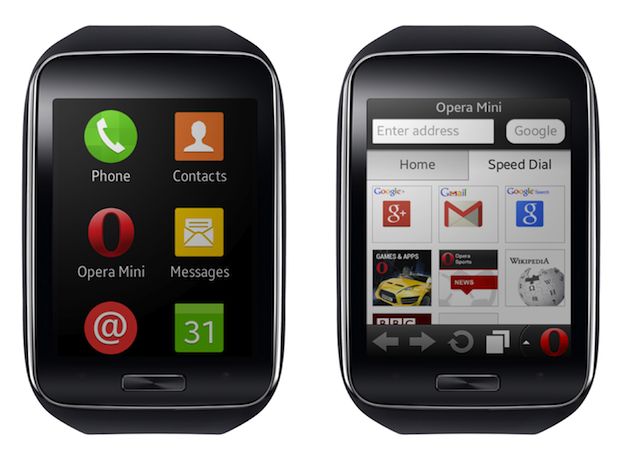
Samsung had recently announced that it was joining hands with Nokia for HERE Maps and while there is an Android app (for Samsung smartphones only) in the works, they were quick to announce that there would be a HERE for Gear app launched for the Gear S Smartwatch as well.
TAGS: wearable, smartwatch, Software, Samsung, Samsung Gear S
LG’s G Watch R Will Cost You A Pretty Penny
One of the most desirable smartwatches in the Android space, the LG G Watch R is said to retail at a higher than usual price tag.
-
Team TechTree
18:17 07th Oct, 2014

The LG G Watch R was announced sometime before the IFA Berlin. And while LG did host a grand event for the announcement of its second, refreshed Android-Wear offering, the launch of the smartwatch in India along with the pricing is nowhere to be found. Well, news is that a local online retailer in Korea has supposedly cut a deal with LG and will be offering the LG G Watch R exclusively for a week in Korea, starting tomorrow.
What comes to light here is the price tag of the smartwatch, something that was a mystery with the Moto 360 and has again been a similar story since the G Watch R was announced. The price, says a source is higher than the original G Watch. LG’s round smartwatch offering will cost buyers KRW 352,000; that’s approximately Rs 20,000 in Indian monies.
While the Moto 360 is currently retailing for Rs 17,999 online in India, LG’s offering being slimmer with a completely round display can easily demand a higher price. This is possible considering that the smartwatches are clearly disappearing off shelves much faster than manufacturers can stock them back on. The Moto 360 is already out of stock on Flipkart even at Rs 18,000.
The LG G Watch R comes with a round POLED (plastic organic LED) display with a 320 x 320 resolution, a Snapdragon 400 humming inside and a 410 mAh battery powering the smartwatch and all its sensors.
TAGS: wearable, smartwatch, Android Wear, LG G Watch R
Flipkart Adds A Price Tag For The Moto 360, Then Takes It Down
Considering that the other two smartwatches are still out of stock, the Moto 360 could not launch at a better time than this,
-
Sheldon Pinto
10:22 03rd Oct, 2014

The Motorola Moto 360 seems to have gotten a lot of attention right from the very beginning, when Google first announced the Android Wear platform. Ever since, consumers have been dying to get their hands on one. Google satiated the needs of many by launching the Samsung Gear Live and the LG G Watch in India (pretty quickly we might add), but the Moto 360 is still the smartwatch that not only looks better but comes with that (almost) round display as well.
The smartwatch was listed on Flipkart’s website for long, but never had a price tag on it. Good news is that it had finally arrived. The online retail giant had finally attached a price tag of Rs 17,999 for the smartwatch that had been listed as ‘coming soon’. Sadly though, that joy was short-lived as Flipkart has now taken down the price tag. May be the smartwatch will be available at a lower price, considering that Asus and LG did showed up with some interesting offerings at and before the IFA Berlin that would force the Moto 360 to go on a diet.
Motorola clearly could not have chosen a better time to launch the smartwatch as the festive season is approaching. Again, we are pretty sure that considering the demand for smartwatches here in India and the short supplies that get here, we could expect a lot of them to go on sale with higher price tags in the grey market.
The Moto 360 comes with round 1.5 inch touch screen display of 320 x 290 pixel resolution and is powered by an Texas Instruments OMAP 3 SoC with 512 MB of RAM and 4 GB of ROM. The chunky yet retro-modern design of the smartwatch allows Motorola to pack in a lot of sensors including a pedometer and an optical heart rate monitor to name a few.
Even though the design is a bit chunky, and even though it costs Rs 18,000 we should expect the Moto 360 to get sold out in a few minutes as stocks will indeed be limited (similar to every other Android-Wear smartwatch that has entered the Indian market).
TAGS: wearable, smartwatch, Android Wear, Motorola Moto 360, Motorola
- DRIFE Begins Operations in Namma Bengaluru
- Sevenaire launches ‘NEPTUNE’ – 24W Portable Speaker with RGB LED Lights
- Inbase launches ‘Urban Q1 Pro’ TWS Earbuds with Smart Touch control in India
- Airtel announces Rs 6000 cashback on purchase of smartphones from leading brands
- 78% of Indians are saving to spend during the festive season and 72% will splurge on gadgets & electronics
- 5 Tips For Buying A TV This Festive Season
- Facebook launches its largest creator education program in India
- 5 educational tech toys for young and aspiring engineers
- Mid-range smartphones emerge as customer favourites this festive season, reveals Amazon survey
- COLORFUL Launches Onebot M24A1 AIO PC for Professionals









TECHTREE